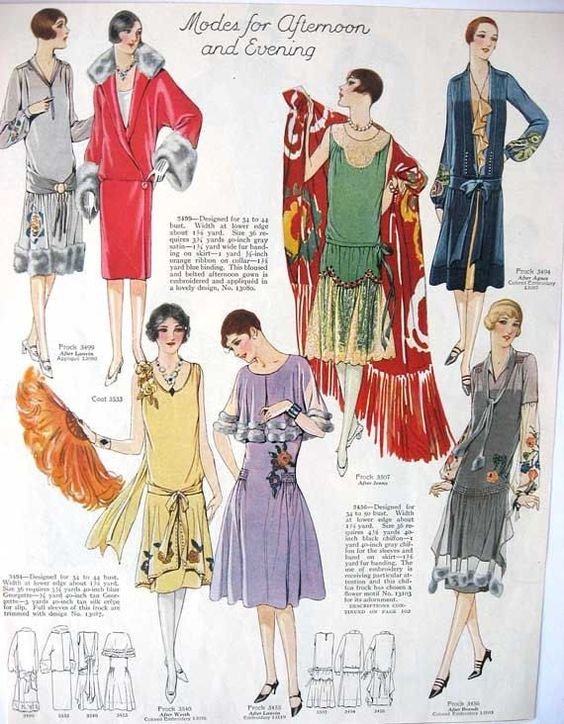1920s Fashion Guide for a Roaring 2020
Grab a sax, brush up your Charleston moves and get ready to party like Gatsby, old sport: the 20s are back! The spirit of the original roaring decade, though, is probably irrepetible, because it was a genuine product of its time: thanks to the booming economy after the terrible years of war, people adopted a flamboyant approach to life, characterised by more freedom, parties and the unforgettable celebration of the jazz age. Obviously, this new mindset was reflected in that decade’s fashion. Whether you are planning a proper 1920s fancy dress event or you’re just looking to steal some ideas and incorporate them into your day-to-day wardrobe, learn all about its most memorable trends in our 1920s fashion guide.
Women's Fashion in the 1920s
 Credit: The Fashion Folks
Credit: The Fashion FolksIn the roaring 20s, women used to dress for occasions, and those belonging to higher social classes would even change their clothes multiple times throughout the day. Basic but durable cotton dresses and aprons were perfect for housewives whilst doing their chores, but they would usually opt for walking suits with knee-length skirts to run errands while their husbands were still at work: more sombre tones were popular in cities, whereas colourful suits would often be seen in the countryside or by the sea.
Since having a tea with friends was women’s most common social activity, particular attention was paid to afternoon dresses: made of more sophisticated materials and often full of embellishments and trims, they were paired up with heels, gloves and hats, especially the iconic cloche model.
 Credit: Glamour Daze
Credit: Glamour DazeBut we think we know what you’re really here for: party fashion, right? The 1920s will always be remembered for their eccentric yet classy evening outfits that would usually consist in sleeveless below-knee flapper dresses. Made popular by Coco Chanel, they usually featured beautiful beaded patterns, but it wasn’t too rare to find fringes or metal sequins; flapper dresses were made of fine materials such as silk, velvet or chiffon and were usually worn with high heels. Voluminous cocoon fur coats were ideal in winter and accessories were indispensable during nights out, from long pearl necklaces, to small pochettes, handbags or crocheted reticules, to quirky hair ornaments like beaded or feathered headbands.
Men’s Fashion in the 1920s
 Credit: Tweedl and the Gentlemans Club
Credit: Tweedl and the Gentlemans ClubIf women dressed for occasions, men’s clothes would usually reflect their job, their seniority at work and, of course, their social status. Working-class men used to wear flat caps (yep, the classic Peaky Blinders hat!), shirts, woolen or tweed vests—usually brownish, grey or navy blue—and trousers with suspenders. Dungarees, overalls and flannel shirts were also popular and practical options.
 Credit: Net Luxury
Credit: Net LuxuryThe most common outfit for middle, upper class or business men consisted of three-piece suits, often striped for the typical 1920s gangster style or made of tweed, and complemented with Oxford or derby shoes.
Tuxedos were a classy choice for higher-end events in town. As for accessories, men had bowties, ties and hats that would change depending on the season or occasion, from felt hats during the coldest months, to top hats for the most formal events, to straw hats in summer. During weekends, days off or summer parties, they would usually be seen in white suits or sportswear, often featuring woollen pullover vests and tall argyle socks.
Even if a hundred years have passed, 1920s fashion doesn’t fail to fascinate us, bringing up a weird nostalgia for a time that we haven’t actually experienced but almost feel like we did, thanks to all the books, films and TV shows that are set in the most roaring decade. What better excuse to celebrate it than the start of 2020?





